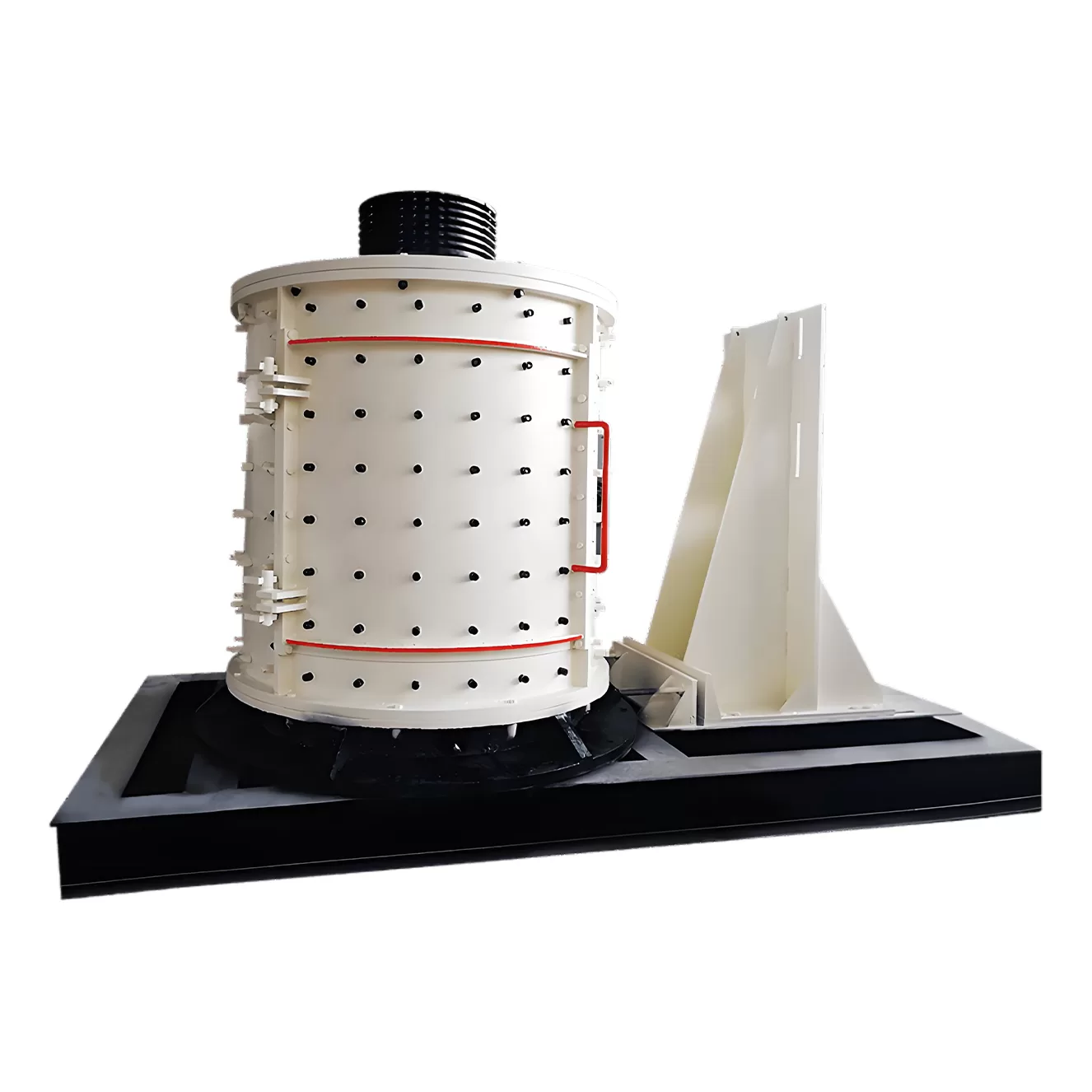全站搜索
Pesquisar em todo o sítio Web
Pesquisar em todo o sítio Web
Compound crusher is the newly developed equipment by combining sand making machine and the crushing principle of impact crusher.
A compound crusher, also called vertical compound sand maker, is a double-rotor primary impact crusher. The compound crusher is an ideal machine for crushing high-moisture and viscous materials, commonly used in small-scale crushing and sand production lines.
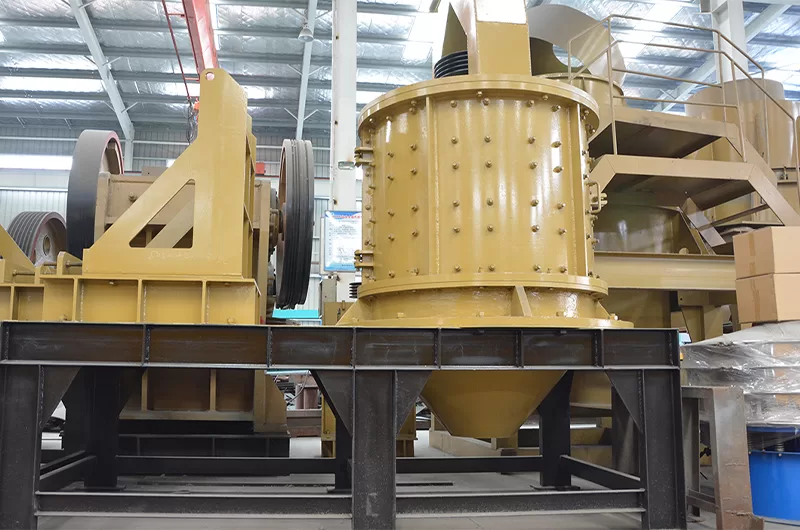
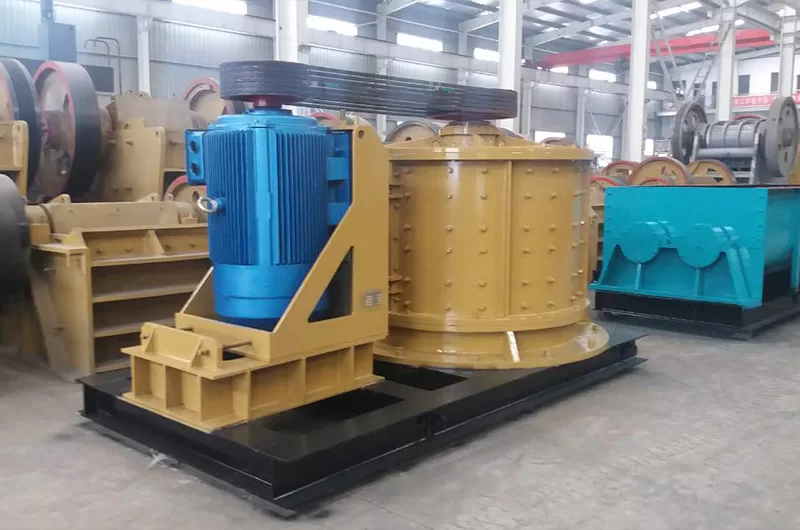
Compound Crusher is used in mining, metallurgy, construction, and coal industries, especially for the production of clinker and aggregates in small and medium-sized cement plants.
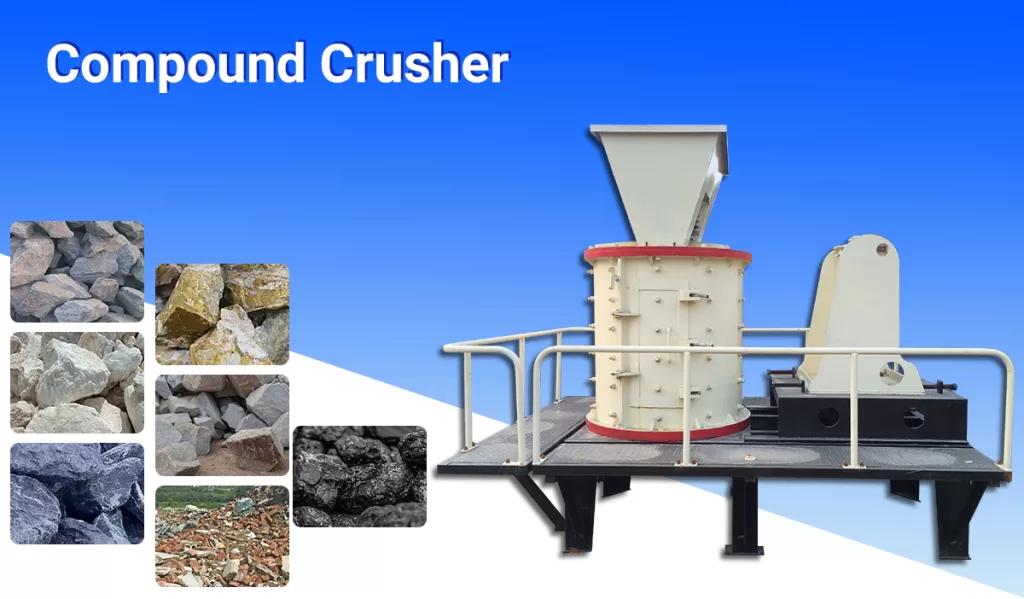
This compound cone crusher has both primary and secondary crushing functions. With large crushing ratio, compound stone crusher can refine the material of 100-240mm to small particles below 3-5mm . The gap between hammer head and impact plate can be flexibly adjusted.Designed with gridless structure, it is not easy to be clogged when dealing with materials containing a lot of slurry. Long bearing life and horizontal arrangement enables it to handle high temperature materials such as cement clinker. Low noise level of 75 decibels (dB) during operation and effective control of dust pollution. The wearing parts are made of special alloy material, which combines high hardness and toughness and multi-element alloy wear resistance, extending the service life to 2-3 times. The rear chamber is equipped with a screw or hydraulic pressure opener, which greatly facilitates the replacement of wearing parts.
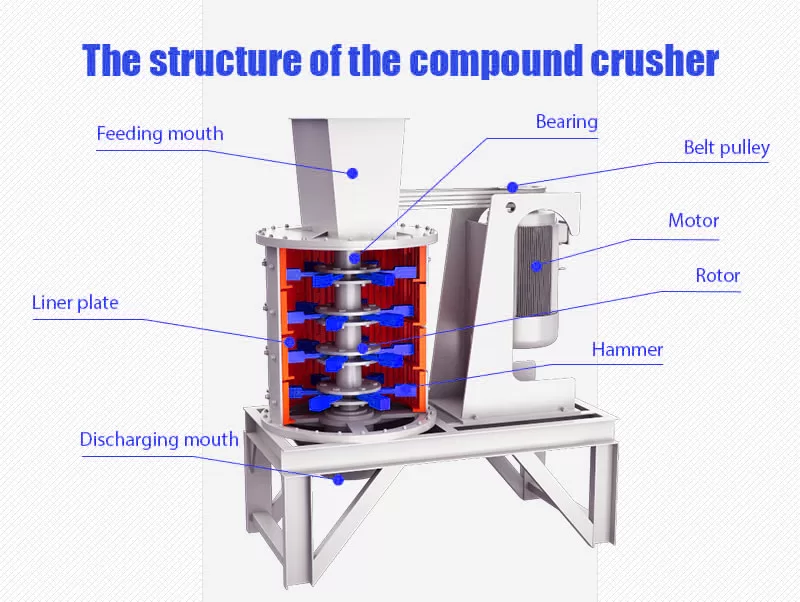
The vertical compound crusher machine is mainly composed of the crushing system (rotor, bearing, liner, hammer), transmission system (motor, pulley), in-and-out mouths, and other parts. Among them, the crushing system is the easy-wearing component, which is mainly introduced for you.
The flat hammer is a vulnerable part of the crusher, installed on the rotor. They break the material by striking it repeatedly.
The hammer head is made of wear-resistant alloy steel or bimetal thermal compound material and the weight is generally between 9-36 kg.
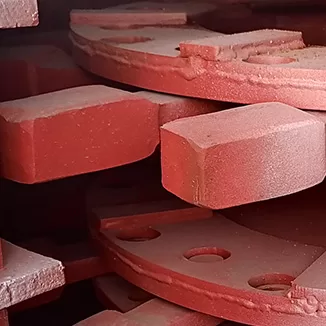
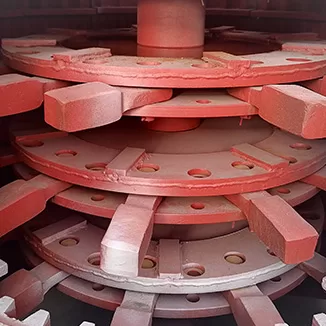
The rotor is a key part installed vertically in the crusher and is made of solid cast steel. The rotor circumference is equipped with hammers with adjustable clearance, responsible for high-speed rotation.
The rotor has a special structure that won’t be worn once crushed. The speed and rotation direction of the rotor affect the crushing efficiency.
The liner plate refers to the wear-resistant plate inside the crushing chamber, which plays the role of grinding materials and protecting the cylinder from wear.
The special casting and heat treatment process makes the liner have good impact resistance.
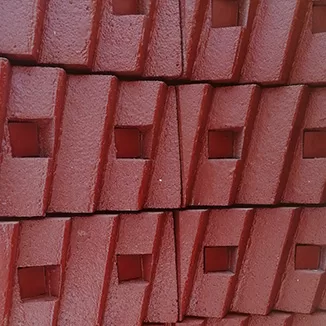
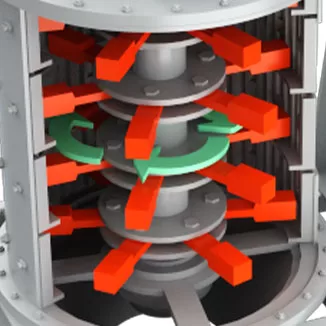
The bearing assembly supports the rotation of the rotor and is critical to the smooth operation of the crusher.
Generally, double-row radial spherical roller bearings are selected, which have strong bearing capacity and good self-aligning performance.
The material in the upper part of the machine perpendicular drops into the high speed rotating impeller,and under the high speed centrifugal force, it produces high speed impact and comminution with the other part of the material which distributes in the shape of umbrella around the impeller vertical composite crusher. The impeller and the housing will be crushed by swirl impact and friction between the impeller and the housing for many times, which will be discharged directly from the bottom, forming a closed circuit multiple cycles, and controlled by the screening equipment to achieve the required product size.
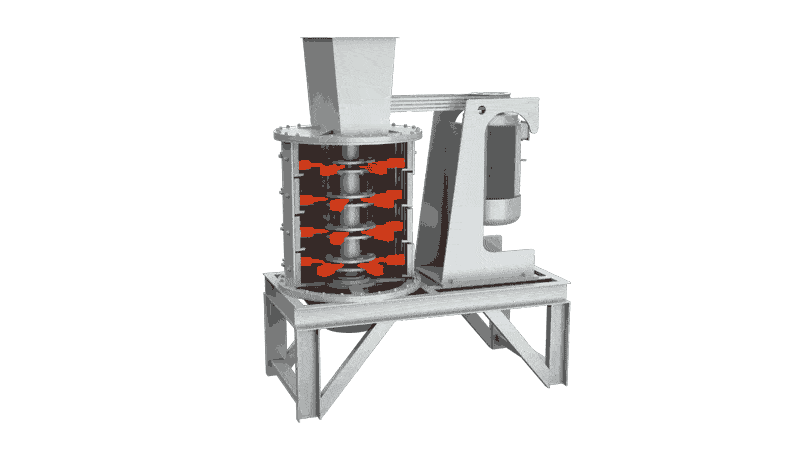
| Specification | Processing Capacity(t/h) | Motor Power(kw) |
| 800 | 5-15 | 4p 30kw |
| 1000 | 10-30 | 4p 55kw |
| 1250 | 20-60 | 6p 90kw |
| 1500 | 30-80 | 8p 110kw |
| 1750 | 40-100 | 8p 160kw |
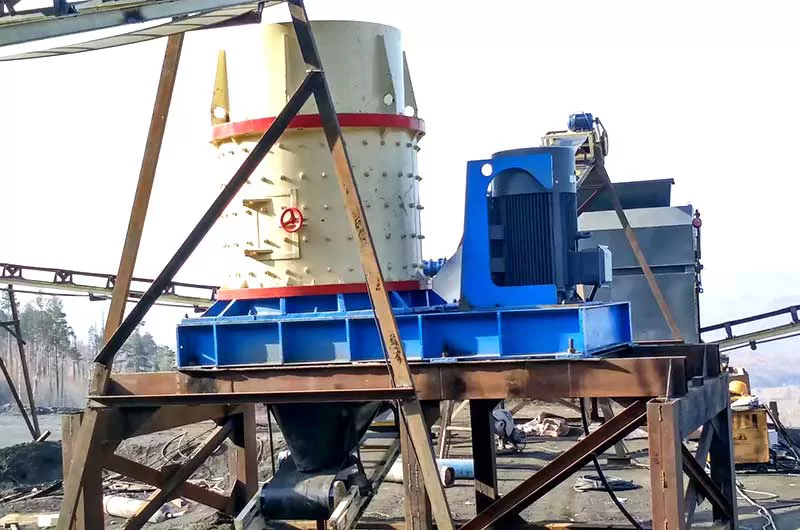
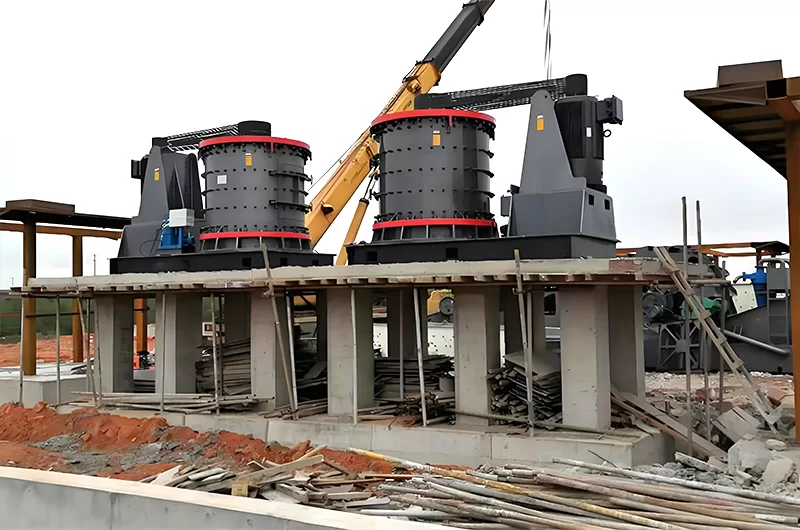
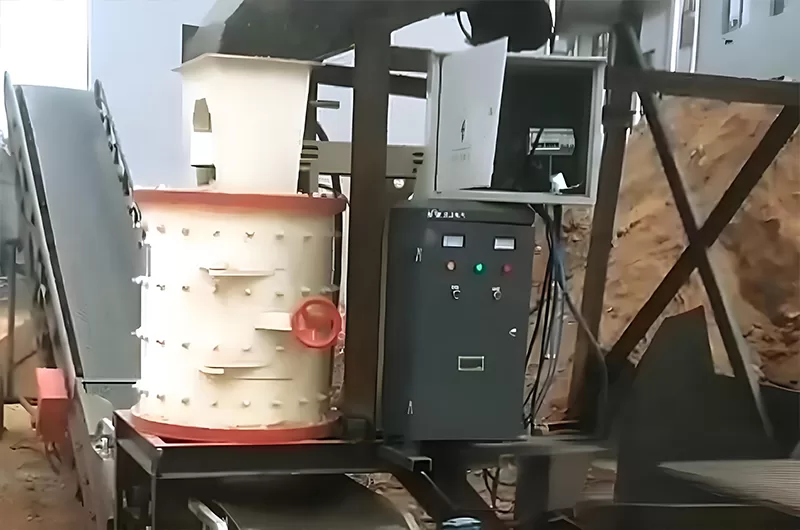
Resposta: Os principais factores que influenciam a separação incluem o movimento da mesa (curso e frequência), o volume e a inclinação da água, a taxa de alimentação e a concentração, bem como o tamanho e a forma das partículas do material de alimentação. O ajuste correto destes factores é fundamental para uma separação eficiente. As inclinações longitudinais e transversais da mesa devem ser controladas com precisão. A concentração de alimentação também deve ser adequada, normalmente 20-30% para minerais grosseiros e 15-25% para minerais finos.
Resposta: A operação envolve a observação da superfície da mesa e o ajuste da inclinação, do fluxo de água e da taxa de alimentação. A manutenção regular inclui a verificação de peças soltas, a lubrificação dos componentes móveis, a inspeção do desgaste e a limpeza da superfície da mesa. A manutenção preventiva deve ser efectuada regularmente, com intervalos que variam entre cada mês e uma vez por ano.
Resposta: Os problemas mais comuns podem incluir a vibração da mesa ou cortes irregulares, distribuição desigual do material ou separação deficiente. A resolução de problemas pode envolver a verificação de parafusos soltos, molas danificadas ou desalinhamento, o ajuste da tensão da correia, a inspeção dos componentes eléctricos e a garantia de uma lubrificação adequada. Se houver um ruído invulgar, identifique a fonte e elimine o problema.
Resposta:
Vantagens: As mesas vibratórias oferecem elevadas taxas de enriquecimento, são relativamente simples de operar e produzem zonas de separação visíveis, permitindo um fácil ajuste e monitorização. São adequadas para uma vasta gama de tamanhos e densidades de partículas.
Desvantagens: Normalmente, têm uma capacidade de produção inferior à de outros métodos, como os jigues ou as espirais. Também requerem uma área relativamente grande e consomem uma quantidade significativa de água.
Resposta: A seleção depende do material a ser processado, do rendimento desejado e da gama de tamanhos de partículas. Os factores a considerar incluem a área da plataforma, o comprimento do curso e o design do riffle. Recomenda-se a consulta de um fabricante ou especialista para determinar a configuração ideal.
